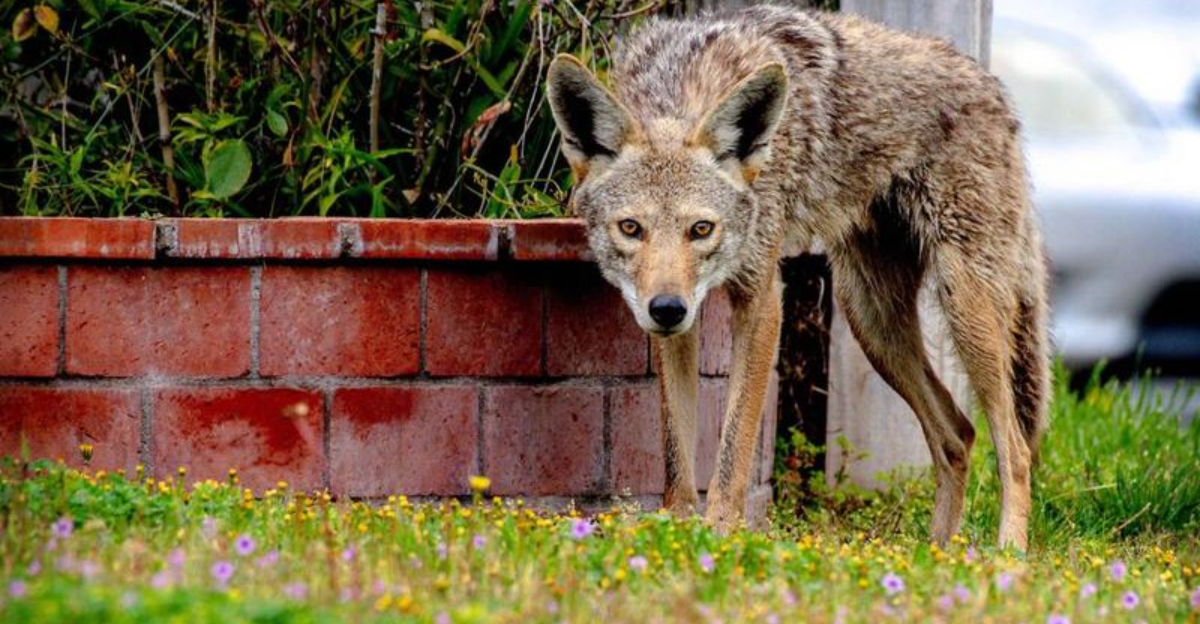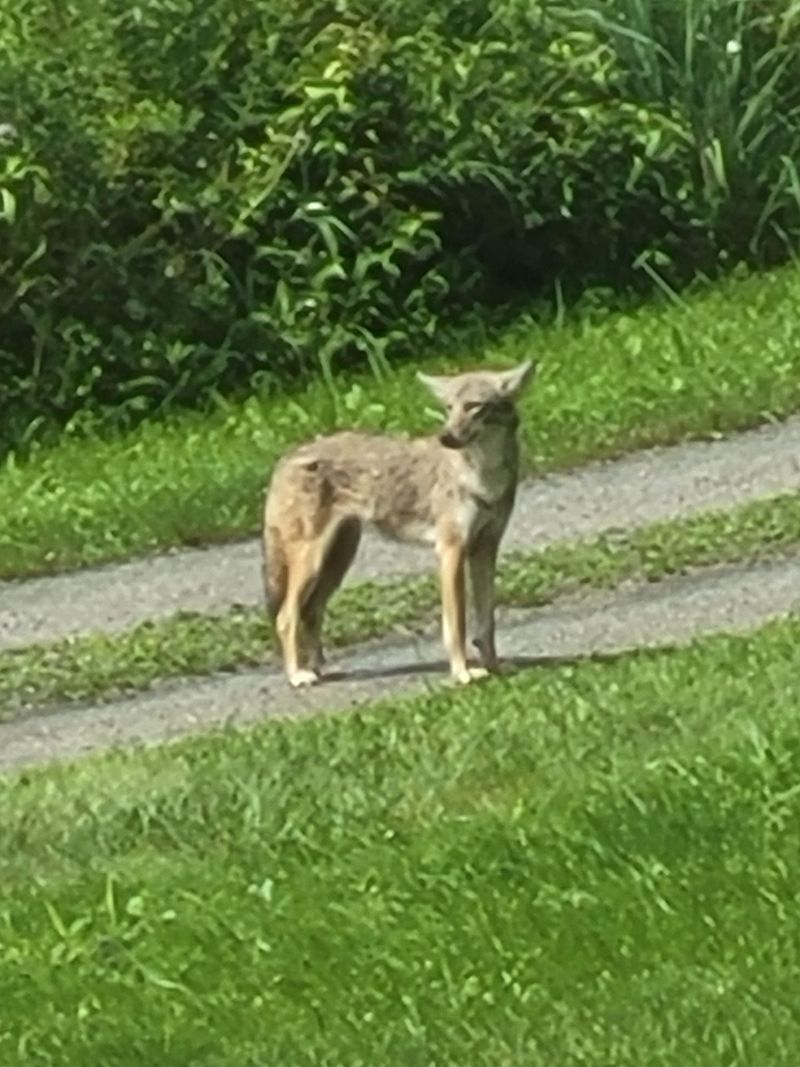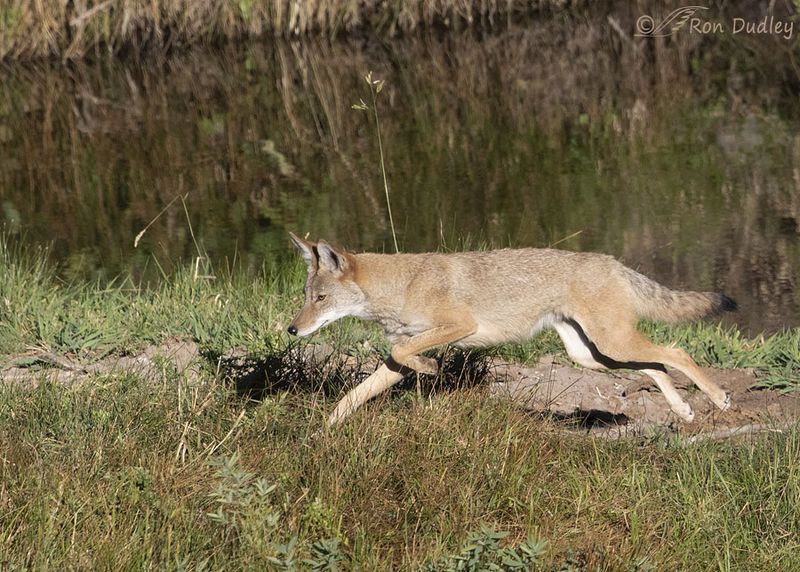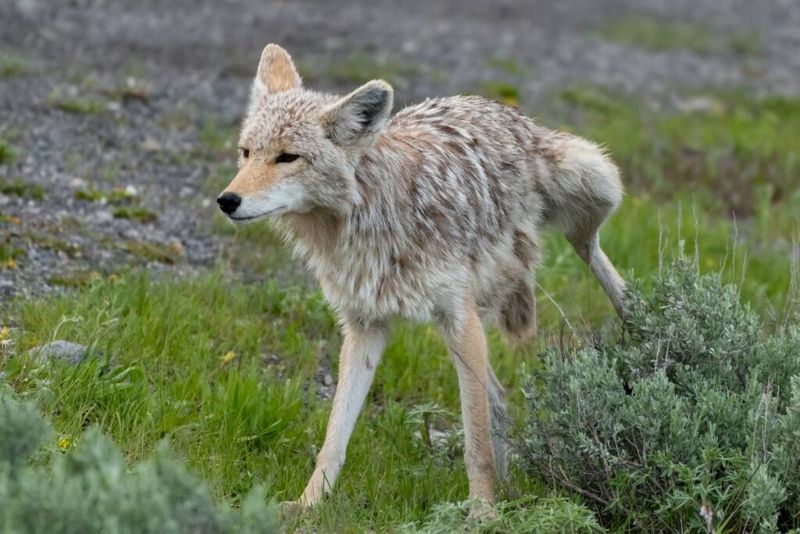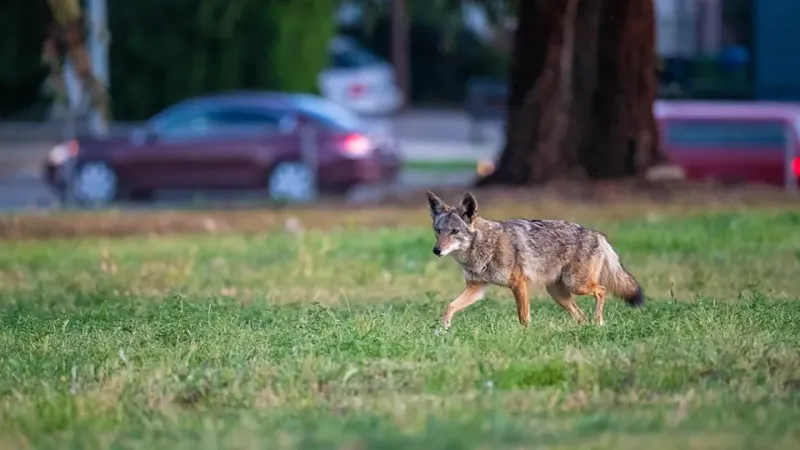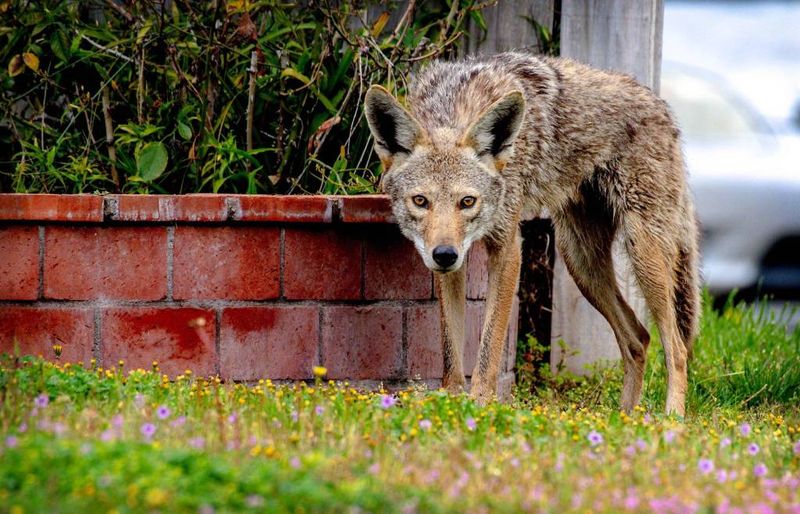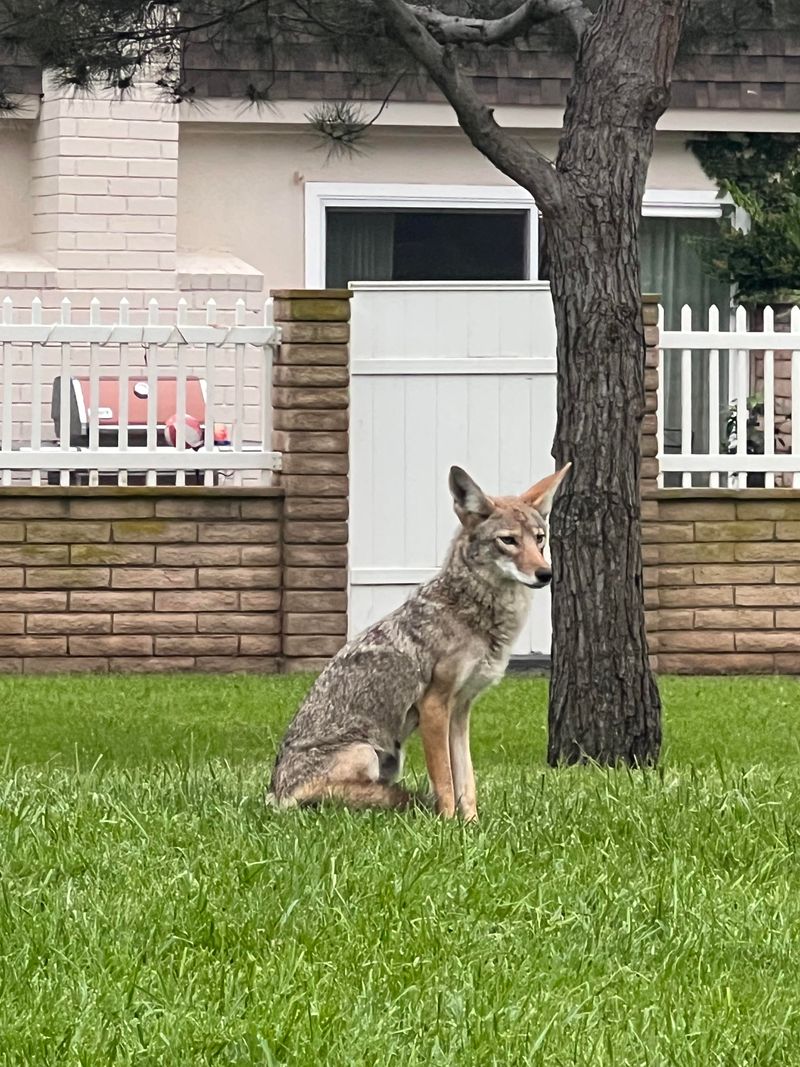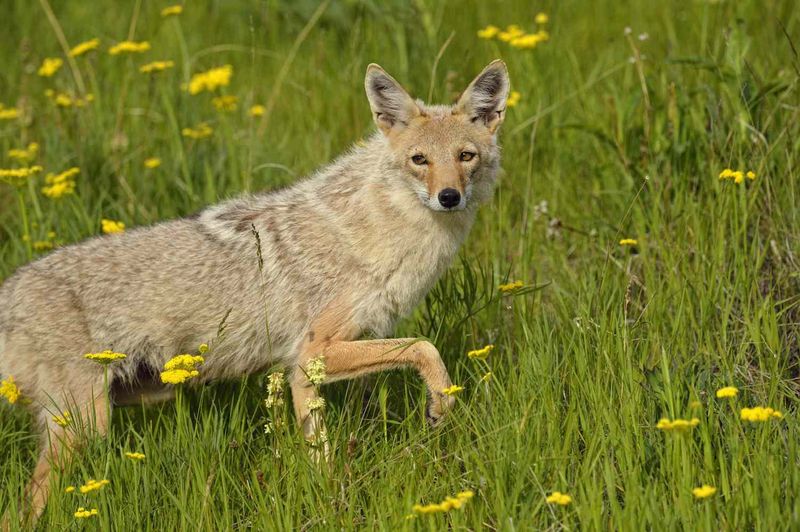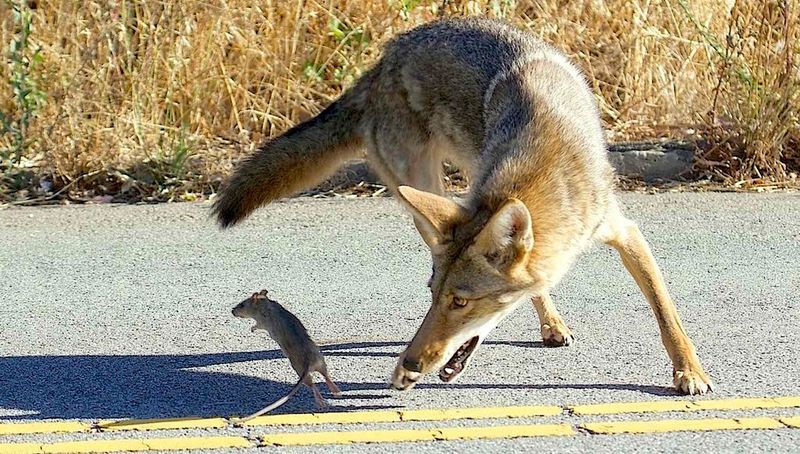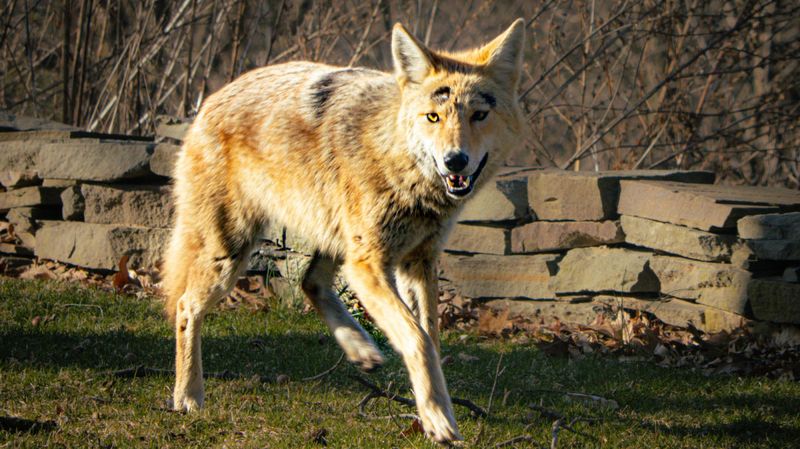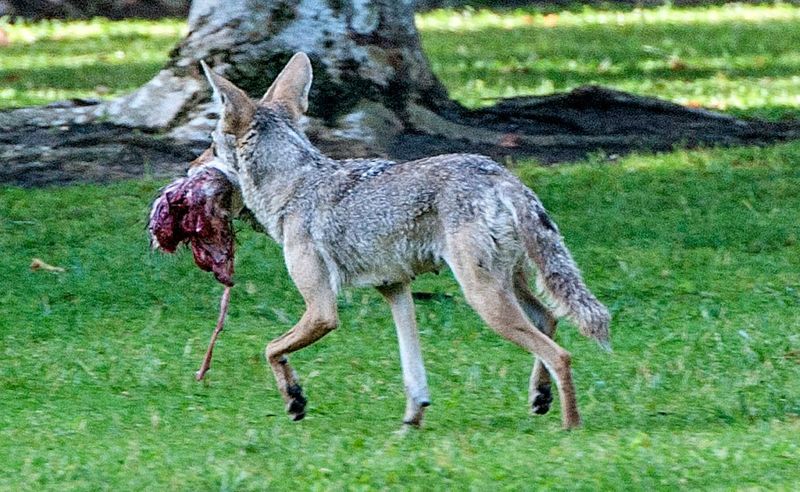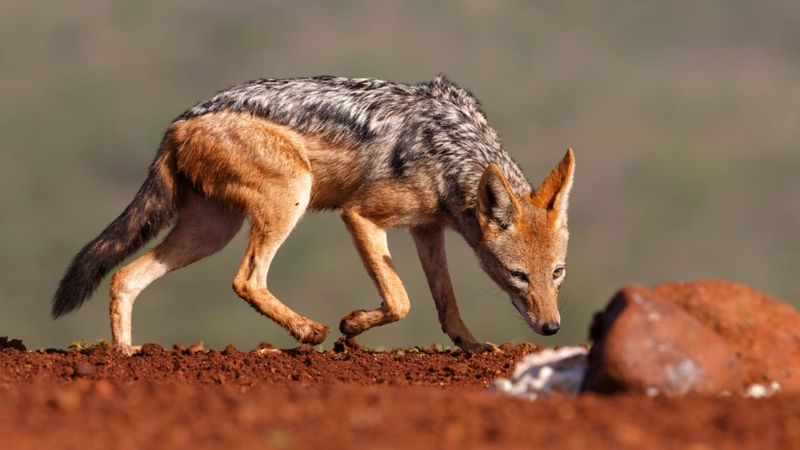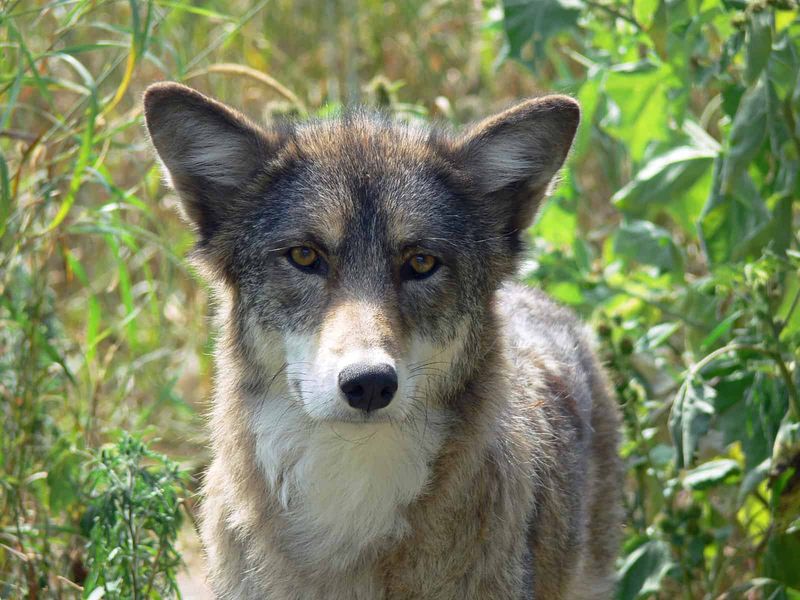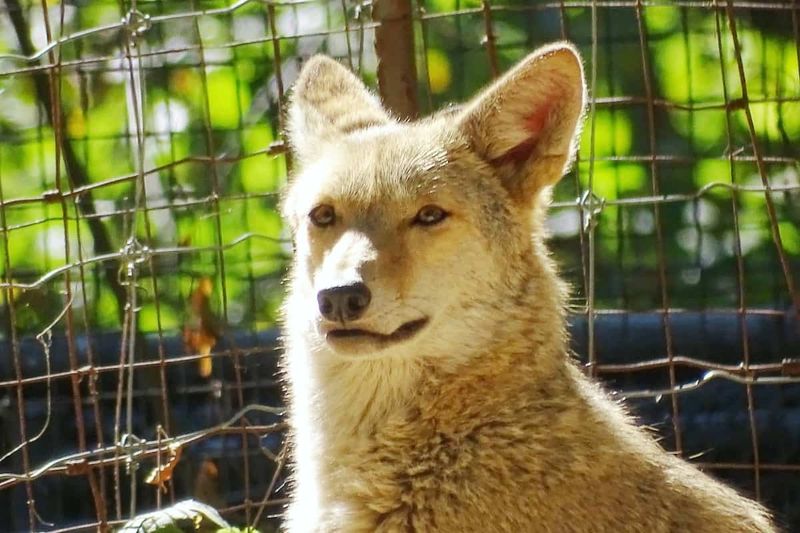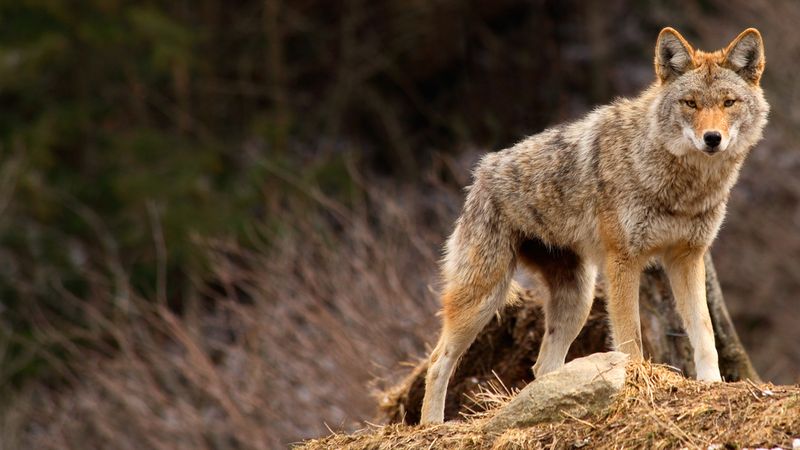Discover the top 15 scents that can transform your yard into a coyote’s favorite destination.
From culinary delights to natural lures, each scent has its unique way of attracting these cunning creatures.
Understanding what draws them in can help you manage their presence more effectively.
1. Raw Meat or Bones
The smell of raw meat or bones is like a dinner bell for coyotes. Fresh or rotting, their keen sense of smell can detect these protein-rich treats from afar. Even the tiniest scraps left in the open can become beacons, drawing them into your yard. It’s a primal call that they find hard to resist.
Coyotes are opportunistic feeders, and any leftover meat offers a promising meal. So, if you’ve had a barbecue or picnic, be cautious about how you dispose of bones and scraps. Secure trash bins or compost piles can help keep these scavengers at bay.
2. Fish and Seafood
The potent aroma of fish and seafood is a tantalizing lure for coyotes. Whether cooked or raw, the scent travels far and wide, appealing to their scavenger instincts. This odor is not only inviting but signals a meal that’s both nutritious and accessible.
Leaving fish remains or unconsumed seafood outdoors can be an unintended invitation. If you’re near a body of water or have a habit of fishing, ensure all remnants are properly disposed of. This simple step can prevent unexpected visits from curious coyotes drawn by the promise of an easy feast.
3. Animal Waste
Animal waste, such as dog or cat feces, can catch a coyote’s attention for several reasons. It might signal prey, rivals, or simply pique their curiosity. This natural byproduct can become a focal point for coyotes exploring new territories.
While it may seem harmless, leaving feces in your yard can lead to unwanted investigations. Regular cleaning and proper disposal of animal waste can help maintain your yard’s privacy. By keeping the area clean, you reduce the scents that might call out to these inquisitive creatures, minimizing their interest.
4. Cooked Food Scraps
The smells of cooked food scraps can be irresistible for coyotes. Think of grilled meats, barbecue drippings, or greasy leftovers—these aromas mimic the scents of a feast. Coyotes, ever the opportunists, will seize the chance to investigate any hint of a cookout.
After outdoor gatherings, ensure leftovers are properly contained or disposed of in secure bins. This practice not only prevents coyotes from visiting but also keeps your yard clean and inviting for humans. Remember, what tempts us at a barbecue tempts them as well.
5. Pet Food (Especially Wet Dog or Cat Food)
Coyotes have a nose for pet food, particularly wet varieties that emit strong, meaty aromas. These scents are like open invitations, signaling a feast waiting to be discovered. Leaving pet food outdoors overnight is almost guaranteed to attract these clever creatures.
To prevent uninvited guests, feed pets indoors and store food securely. This not only deters coyotes but also protects your furry friends from potential danger. Remember, what seems like a simple convenience to us can be a tantalizing treat for a hungry coyote on the prowl.
6. Bacon or Grease
Few scents travel as effectively on the breeze as bacon or grease. To a coyote, the rich aroma is practically an invitation to explore. Disposing of grease in the yard, whether from bacon or other cooking, acts as a powerful lure.
To avoid attracting coyotes, always dispose of cooking grease in a sealed container. This small action ensures that your yard remains free from these curious critters. After all, who could blame a coyote for succumbing to the mouthwatering smell of bacon floating through the air?
7. Eggs
Eggs, whether raw or spoiled, carry a sulfuric scent that coyotes find particularly appealing. Known as expert egg thieves, they are drawn to this unmistakable aroma. The smell signals a potential meal, ripe for the taking.
If you raise chickens or tend to leave eggshells in compost, ensure they are securely contained. This precaution prevents coyotes from getting too interested in your yard. By managing food sources effectively, you safeguard your property from these wily foragers.
8. Rodent or Small Animal Scents
Coyotes are natural predators of small animals such as rabbits, squirrels, and rats. When your yard attracts these creatures, it inadvertently becomes a hunting ground for their predators. The scents left by these small animals serve as clear signals to nearby coyotes.
Managing small wildlife populations and their access to your yard can minimize coyote visits. Consider strategies like fence enclosures or natural deterrents to keep both prey and predator at bay. This approach not only protects your garden but also maintains a balanced ecosystem.
9. Scent of Outdoor Cats
The musky smell of outdoor cats, especially unneutered males, can captivate a curious coyote. They may perceive this scent as a sign of a potential meal or territorial challenge. Cats, being both prey and competitors, are naturally intriguing to coyotes.
To protect your feline friends, consider keeping them indoors or supervising their outdoor time. This not only ensures their safety but also keeps inquisitive coyotes from taking too keen an interest in your yard. A proactive approach can help maintain harmony with the local wildlife.
10. Dead Animals (Roadkill, etc.)
Carrion, or dead animals, are staples in a coyote’s diet. The smell of decay, even faint, acts as a magnetic pull for these scavengers. Whether it’s roadkill or natural death, such remnants are irresistible to a coyote’s senses.
Regularly checking your property for any signs of deceased animals can prevent unwanted visits. By quickly addressing and removing carrion, you minimize the scents that attract coyotes. This simple practice keeps your yard orderly and less appealing to these resourceful foragers.
11. Cheese
Certain cheeses, particularly those that are strong and pungent like blue cheese or cheddar, can mimic the savory smells of protein-rich foods. To a coyote, this aroma is both intriguing and inviting, suggesting a possible meal.
To prevent unintentional coyote visits, avoid leaving cheese or cheese-based foods outdoors. Securely dispose of any leftovers to eliminate these enticing scents. A little vigilance goes a long way in keeping your yard from becoming a coyote’s next stop on their foraging route.
12. Chicken Feed and Livestock Scent
Backyard chickens and their feed emit distinct aromas that signal food and potential prey. For coyotes, these scents represent both a meal and a hunting opportunity. The combination of feed and the natural scent of livestock can be irresistible.
To deter coyotes, ensure that chicken coops are secure and feed is stored properly. This not only protects your animals but also keeps curious coyotes at a distance. Thoughtful management of livestock areas can reduce the appeal of your yard as a hunting ground.
13. Overripe or Fermenting Fruit
Fallen fruit, especially when overripe or fermenting, can attract coyotes seeking easy sugars and moisture. The sweet, tangy aroma of decaying fruit is a strong lure for these adaptable creatures, offering a simple snack.
Regularly collecting fallen fruit and managing tree areas can prevent coyotes from visiting your yard. By maintaining cleanliness and order, you minimize the scents that draw them in. This practice not only keeps your property tidy but also discourages coyotes from making it a regular stop.
14. Compost with Food Waste
Compost piles that include food waste like banana peels, meat scraps, and even coffee grounds act as buffet advertisements to coyotes. The rich, earthy aroma combined with food scents is an irresistible draw for these clever foragers.
Ensure compost bins are covered and secure to prevent coyotes from exploring your property. By managing compost responsibly, you maintain your garden’s health while keeping scavengers at bay. Thoughtful composting practices can turn your yard from a feeding ground into a thriving, coyote-free oasis.
15. Dog Scent (Especially in Heat or Marking Territory)
The scent of dogs, particularly those in heat or marking their territory, can be a significant draw for coyotes. They might interpret these smells as a territorial challenge or, during breeding season, a mating opportunity.
To minimize attractions, keep your dog indoors or closely supervised during these sensitive times. This not only protects your pet but also discourages coyotes from exploring your yard further. By understanding the signals your pets send, you can create a safer environment for everyone involved.
